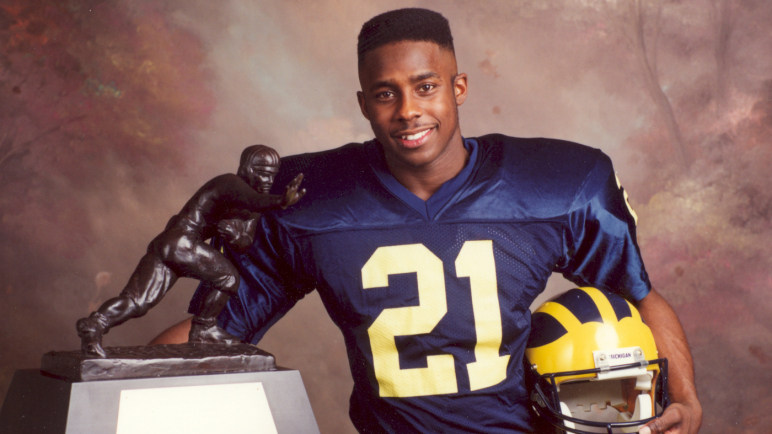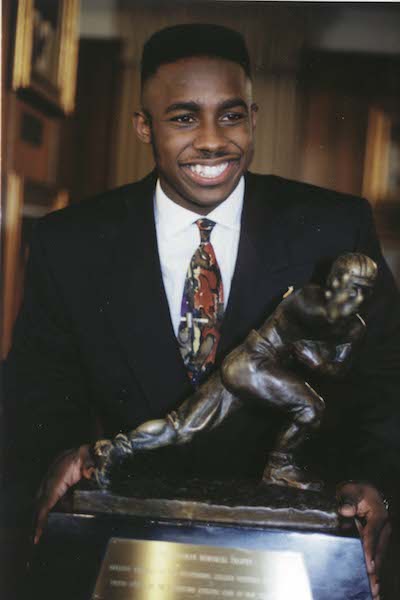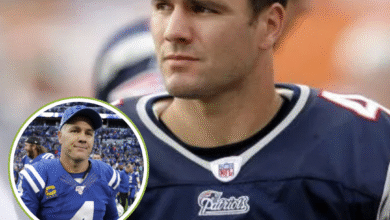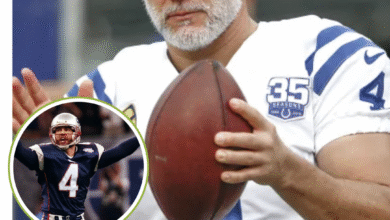Only Five Have Done It—Here’s Why Desmond Howard’s Path to Football Royalty Stands Alone
OPINION: This article may contain commentary which reflects the author's opinion.
In the pantheon of American football, only five players have achieved the elusive trifecta of winning a Heisman Trophy, a College Football National Championship, and a Super Bowl. Desmond Howard, with his electrifying playmaking and unrelenting drive, stands among these giants—Roger Staubach, Tony Dorsett, Marcus Allen, and Charles Woodson. Yet, Howard’s journey to this exclusive club is uniquely his own, marked by versatility, resilience, and iconic moments that continue to define his legacy. This article explores why Howard’s path to football royalty is unparalleled.
Born on May 15, 1970, in Cleveland, Ohio, Desmond Howard’s athletic gifts emerged early. At St. Joseph High School, he starred in football and track, showcasing the speed and agility that would become his trademarks. When he arrived at the University of Michigan in 1989, the Wolverines gained a dynamic talent. Under coaches Bo Schembechler and Gary Moeller, Howard transformed into a multifaceted threat as a wide receiver, kick returner, and punt returner, setting the stage for a historic college career.
The 1991 season was Howard’s magnum opus. As a junior, he dazzled with 62 receptions for 985 yards, 19 receiving touchdowns, and three return touchdowns. His ability to flip games with a single play was unmatched, but one moment against Ohio State crystallized his brilliance. Catching a punt at his own 7-yard line, Howard weaved through defenders for a 93-yard touchdown, capping the play with the now-iconic “Heisman pose” in the end zone. That audacious display of confidence propelled him to the 1991 Heisman Trophy, making him Michigan’s first winner since 1940. His individual brilliance, paired with the Wolverines’ 10-2 record, cemented his status as a college football legend.
While Howard did not win a national championship during his Michigan tenure, his contributions elevated the program’s prestige, aligning with its storied tradition of excellence. His impact resonated beyond statistics, as he embodied the Wolverines’ grit and flair in a fiercely competitive era.
Selected fourth overall by the Washington Redskins in the 1992 NFL Draft, Howard faced immediate skepticism. At 5’10” and 185 pounds, critics doubted his ability to endure the NFL’s physicality. His early years were uneven, with stints at Washington, Jacksonville, and Green Bay testing his resolve. But Howard’s perseverance paid off with the Green Bay Packers in 1996-97. In Super Bowl XXXI, he delivered a performance that would etch his name in NFL history. Facing the New England Patriots, Howard returned a kickoff 99 yards for a touchdown—a game-changing play that sparked Green Bay’s 35-21 victory. His 154 return yards earned him Super Bowl MVP honors, making him the only special teams player to claim the award. That ring completed his trifecta, joining the Heisman and his contributions to Michigan’s championship-caliber legacy.

What sets Howard apart from his fellow trifecta members is his path as a non-traditional star. Staubach was a quarterback, Dorsett and Allen were running backs, and Woodson was a defensive back with offensive flair. Howard, however, thrived as a return specialist and receiver, roles often undervalued compared to marquee positions. His ability to dominate on special teams—a phase of the game where split-second decisions define outcomes—required a rare blend of vision, speed, and courage. The Super Bowl kickoff return, executed under the brightest lights, showcased his knack for seizing the moment.
Howard’s versatility also distinguishes him. While his peers excelled in singular roles, Howard impacted games in multiple ways: catching passes, returning kicks, and shifting momentum. His 1991 Heisman campaign, with touchdowns via receptions and returns, exemplified this all-purpose brilliance. In an era before the NFL fully embraced hybrid players, Howard was a pioneer, proving that a “smaller” athlete could dominate through skill and heart.
After retiring in 2002, Howard transitioned to broadcasting, becoming a respected ESPN college football analyst. His charisma and deep game knowledge keep him connected to the sport, inspiring fans and players alike. Yet, his legacy endures most vividly in his signature moments: the Heisman pose, the Super Bowl return, the sheer audacity of his play.



